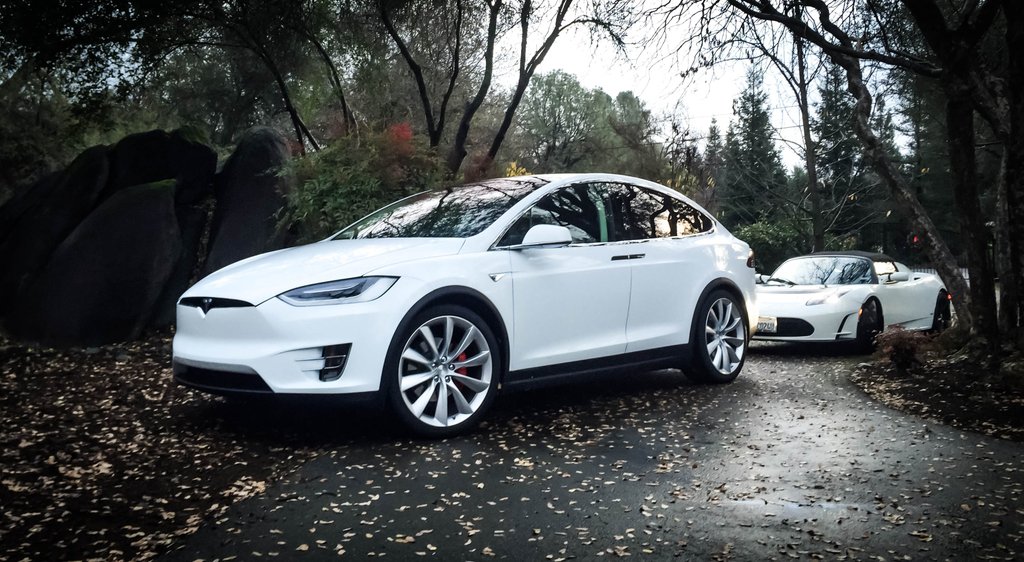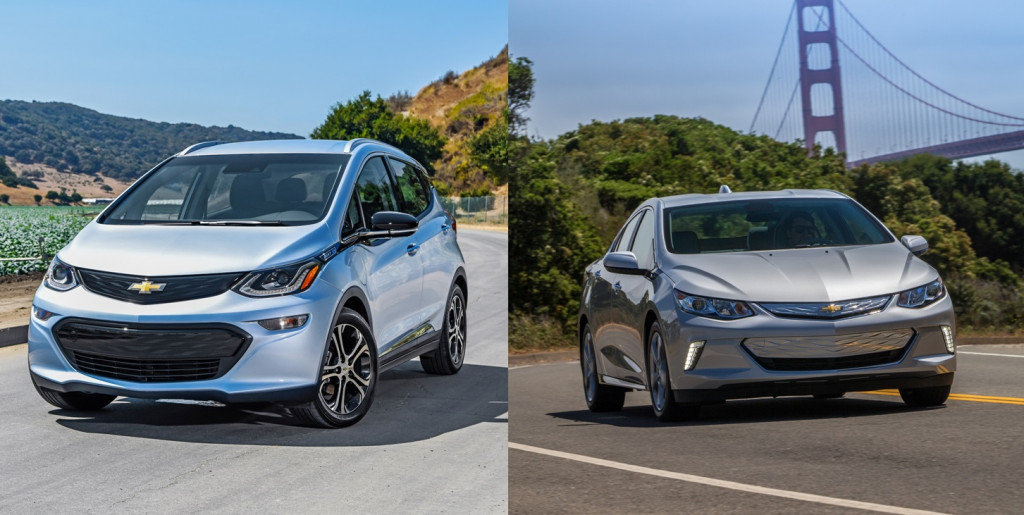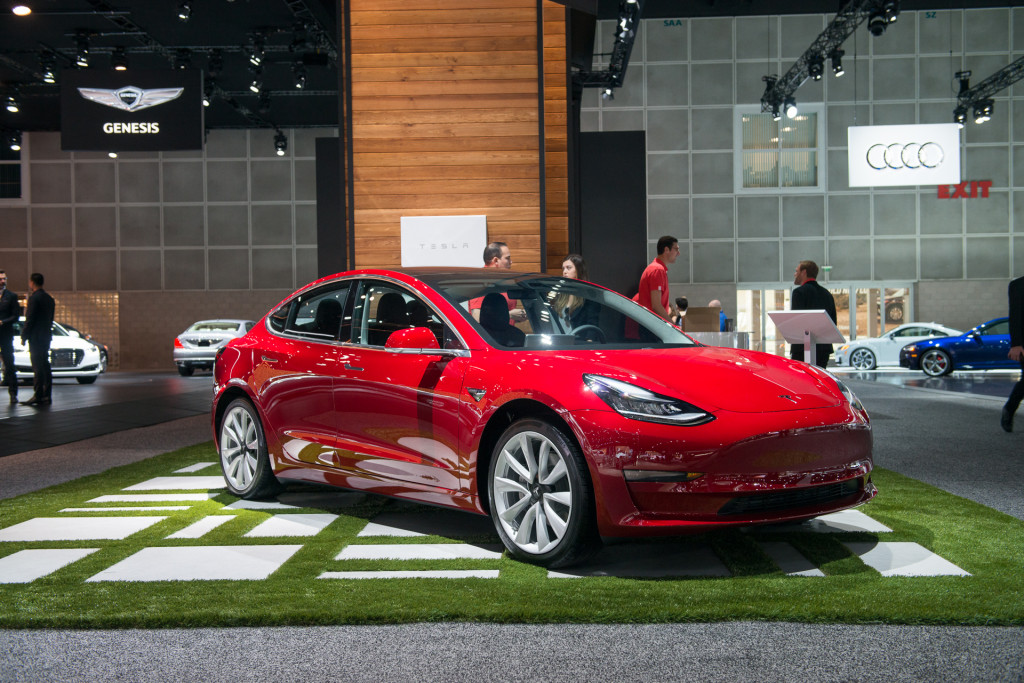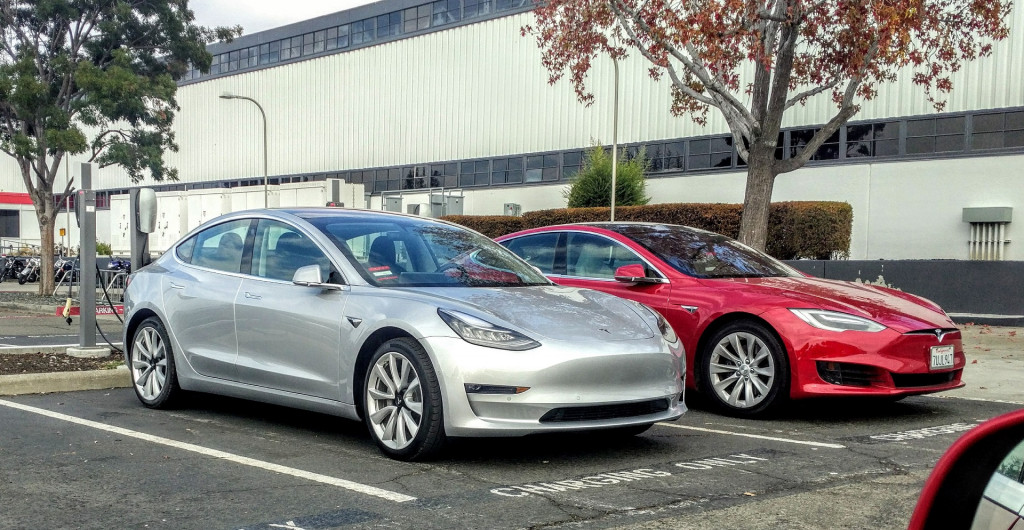Competition for the title of most popular electric car has sparked a long and highly charged race between Tesla and Chevrolet.
Though these brands offer vastly different versions of electric vehicles, they seem to be the two dominating electric vehicle sales in 2017.
Reports show that top monthly electric car sales rotated between the Chevy Volt, the Chevy Bolt EV, and the Tesla Model S for the majority of the year.
DON'T MISS: Plug-in electric car sales for Nov: Volt vs Prime neck-and-neck, Bolt EV just misses 3K
The Tesla Model S is the current winner of overall sales for 2017, but the Chevy Bolt EV’s performance in October is an example of how Chevrolet is nipping at Tesla’s heels to become a main contender for the most popular electric car on the market.
The Bolt EV had a spectacular sales month in October, which pushed the vehicle far ahead of Tesla Model S sales over the 31-day period.
If Chevy’s electric models continue to grow at this rate, Telsa had better start guarding its crown.

2017 Chevrolet Bolt EV pre-production vehicles at Orion Township Assembly Plant, March 2016
October sales data
The Chevy Bolt EV maintained momentum from a high sales month in September to sell 2,781 cars in October. Tesla, however, saw a drastic decrease in sales.
In September, the Model S took a significant lead over Chevy Bolt EV sales, selling 4,860 cars. In October, Model S sales took a nosedive with a reported 1,120 cars sold for the month.
Though the Tesla Model S is still winning the war on electric car purchases for the year as a whole, it’s important to note the battles won by its less luxurious competitors, the Chevy Bolt EV and the Chevy Volt.
With little more than a lower price tag to sway consumers in the market for electric cars, the Bolt EV and the Volt have bested the Model S on monthly sales multiple times throughout the past year.
The sales trends of Tesla’s Model S and Chevy’s Bolt EV and Volt reflect American consumers’ internal battle between practicality and luxury when it comes to purchasing a car.

Tesla Model S P100D runs 0-60 in less than 2.4 seconds
Features vs affordability
The top end of the Tesla Model S range is arguably the coolest electric car on the market.
The model comes standard with Dual Motor All Wheel Drive that includes a high-efficiency front motor and a high-performance back motor to power the vehicle from 0 to 60 mph in a mere 2.5 seconds.
The model also has full self-driving capabilities and comes with an enhanced autopilot feature to support regular driving functions.
Add in the clout behind the luxury car brand name and the sleek look and feel of the exterior and interior components, and you can see why this car is selling like hotcakes in the U.S.
Although the Chevy Bolt EV has difficulty competing on the features and performance front, Chevy maintains one important competitive edge: affordability.
Tesla has struggled to ramp up production on its Model 3 which promises to be a more affordable option for aspiring Tesla owners.

2016 Tesla Model X with 2011 Tesla Roadster Sport, photographed by owner Bonnie Norman
Though the Model S and the Model X come with incredible features and lavish luxury car amenities, the models also come with high price tags that start above the $60,000 mark (even after tax incentives).
This could serve as a strong deterrent for potential buyers in the U.S., where the median annual income is $56,515.
The Model 3 promises a lower price tag, starting at around $35,000, but as Elon Musk has himself stated, the company is in “manufacturing hell” when it comes to the production of this more affordable model.
Delays in the release of this model have even contributed to a decrease in Tesla’s stock value.
Chevrolet, on the other hand, has the production of affordable vehicles down to a science. This has proven useful when producing electric vehicles such as the Bolt EV and the Chevy Volt.

2018 Chevrolet Bolt EV electric car and 2018 Chevrolet Volt plug-in hybrid
The price tag for the Chevy Bolt EV starts at about $36,000, which puts the final cost of ownership at around $30,000 after tax incentives.
The Volt (also a top-selling electric vehicle in the U.S.) offers an even more affordable option, with models starting at $33,000.
However, while the Chevy models accommodate budget-conscious Americans, they have a hard time satisfying the needs of consumers who want more than a practical car to help them get from point A to point B.
The Bolt offers front wheel drive only and is notably slower than the Model S — with a record of reaching zero to 60 in 6.5 seconds, compared to the Model S’s 2.5-second record.
The car touts a long battery life and a solid user interface, but at the present moment it lacks the self-drive and enhanced autopilot features Tesla is best known for in its Model S.
And, perhaps most importantly for car snobs, neither the brand nor the overall design of the car conjure “luxury.”

2017 Tesla Model 3, 2017 Los Angeles Auto Show
What happens when Model 3 production revs up?
Although a high price tag has yet to stop Tesla from beating its lower-priced competitors in terms of EV sales for the past year, it could cause the carmaker’s sales to drop below its competitors’ on a month-to-month basis.
We see Tesla as the holy grail of electric vehicle production, but the brand’s competition is catching up in a big way with more affordable, practical options for electric car enthusiasts.
The Chevy Bolt EV and the Chevy Volt are stealing the hearts of Americans who want to own an eco-friendly car but are on a budget. When the Model 3 is able to reach optimal production, will the playing field remain level?
Although the stock versions of the model with no additional options will lack the speed and autonomous features of the Model S, they will carry Tesla’s luxury name and sleek look at a price that is comparable to the Bolt EV.
We can see that those shopping for an electric vehicle are torn between practicality and luxury.

2017 Tesla Model 3 and Model S in Tesla assembly plant parking lot, Fremont, CA, November 2017
Perhaps a model that combines a little of both will allow Tesla to defend its top position in the electric car industry.
Despite the many issues plaguing Tesla’s operations at the moment, a successful release of the Model 3 could help the carmaker hold onto its crown a little longer.
This article, written by Cosette Jarrett, was originally published on VentureBeat, an editorial partner of Green Car Reports.
_______________________________________












